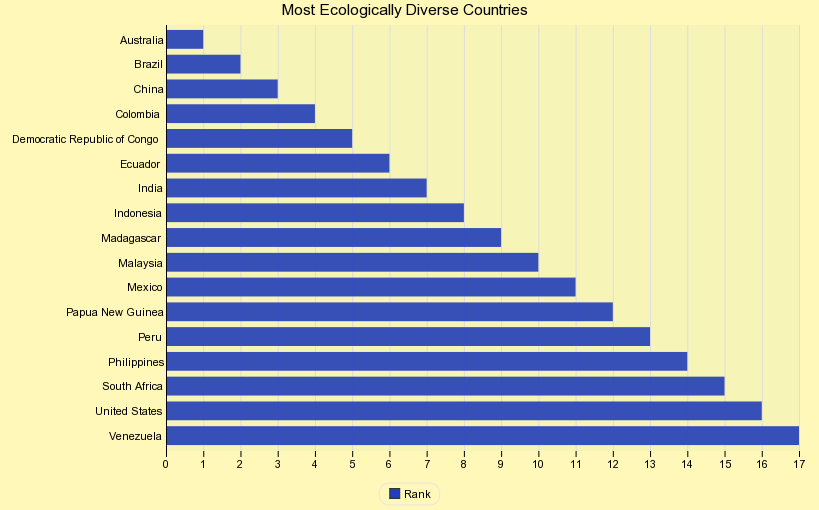This chart shows Most Ecologically Diverse Countries On Earth.
Ecological diversity is a type of biodiversity. It is the variation in the ecosystems found in a region or the variation in ecosystems over the whole planet. Ecological diversity includes the variation in both terrestrial and aquatic ecosystems.
Ecological diversity can also take into account the variation in the complexity of a biological community, including the number of different niches, the number of trophic levels and other ecological processes. An example of ecological diversity on a global scale would be the variation in ecosystems, such as deserts, forests, grasslands, wetlands and oceans.
Ecological diversity is the largest scale of biodiversity, and within each ecosystem, there is a great deal of both species and genetic diversity. Diversity in the ecosystem is significant to human existence for a variety of reasons. Ecosystem diversity boosts the availability of oxygen via the process of photosynthesis amongst plant organisms domiciled in the habitat.
Diversity In an aquatic environment helps in the purification of water by plant varieties for use by humans. Diversity increases plant varieties which serves as a good source for medicines and herbs for human use. A lack of diversity in the ecosystem produces an opposite result.
Understanding megadiversity starts with understanding biodiversity. Biodiversity includes all of the plant and animal species on the planet, their genetic differences, and the ecosystems where they form interconnected communities.
The criteria for a megadiverse classification is two-fold: (1) Have at least 5,000 endemic plants and (2) Have a marine ecosystem within the borders. According to Conservation International, an environmental non-profit, 70% of the world’s flora and fauna exist in only 17 countries. These nations comprise just under 10% of the surface of the earth. This article will list those countries and examples of their megadiversity.
9 years ago

